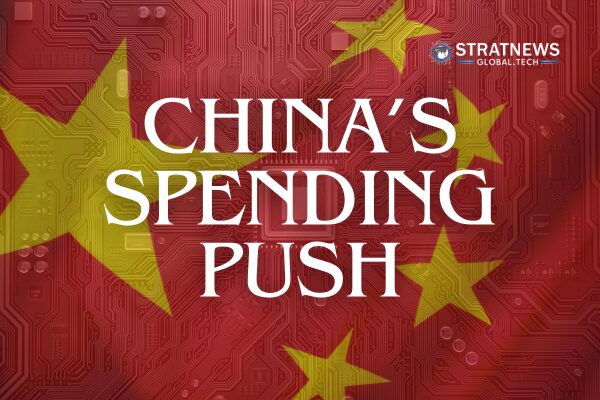Beijing has placed boosting consumer spending at the forefront of its economic agenda for 2025, surpassing technology and industrial production in priority. Lawmakers in China are now focusing on correcting economic imbalances, as weak domestic demand threatens growth in the world’s second-largest economy.
Special Action Plan to Stimulate Consumption
Chinese Premier Li Qiang, in his annual parliamentary report, announced a “special action plan” to increase domestic consumption. The move aligns with the government’s target of around 5% economic growth for 2025. Until now, policymakers have been reluctant to introduce measures that directly put money in consumers’ hands. However, as China faces a prolonged trade war with the US, consumer spending is being seen as crucial to offset potential export losses due to rising tariffs.
The report mentioned “consumption” 31 times, up from 21 last year, highlighting its new significance. In contrast, “technology” was cited 28 times, a slight increase from 26 mentions in 2024.
Expanding Incentives to Boost Household Spending in China
China’s household consumption remains under 40% of its annual economic output—20 percentage points below the global average. Meanwhile, investment is 20 points higher than global norms. This imbalance has prompted Beijing to introduce new policies aimed at increasing consumer confidence and expenditure.
One key measure is the expansion of a trade-in scheme launched last year. Initially focused on electric vehicles, electronics, and appliances, the programme will now cover a broader range of products. The government has pledged to issue ultra-long special treasury bonds worth 300 billion yuan ($41.26 billion) to fund these initiatives, doubling the amount from last year.
Additionally, Beijing has promised greater support for elderly care, childcare, and the healthcare system. These efforts aim to provide a stronger social safety net, encouraging households to spend more. The government also plans to stimulate demand in digital products, tourism, sports, and culture, alongside refining duty-free policies to boost domestic consumption.
Technology Remains a Strategic Priority in China
Despite the shift in focus, technology remains a key pillar of China’s economic strategy. The government has warned of an “increasingly complex and severe external environment,” referring to the US’s tightening restrictions on Chinese access to advanced semiconductor technology.
To counter these challenges, China will intensify support for artificial intelligence (AI) and other high-tech sectors. AI development, particularly large-scale models, was a major focus in the report. Beijing aims to cultivate young scientists and engineers, inspired by the success of homegrown AI startup DeepSeek.
The government also outlined plans to develop “industries of the future,” such as embodied AI (key for humanoid robots), biomanufacturing, quantum computing, and 6G technology. Additional investments will go into virtual reality, advanced computing, and open-source RISC-V chips.
A Shift in Investment Strategy
China’s latest approach signals a shift away from broad state funding toward “effective investment.” This suggests a move beyond simply achieving self-sufficiency and instead positioning China at the forefront of future technological breakthroughs. Officials acknowledge that full independence in all tech sectors may be unrealistic, and the new strategy focuses on leading global innovation rather than solely protecting existing industries.
With inputs from Reuters


